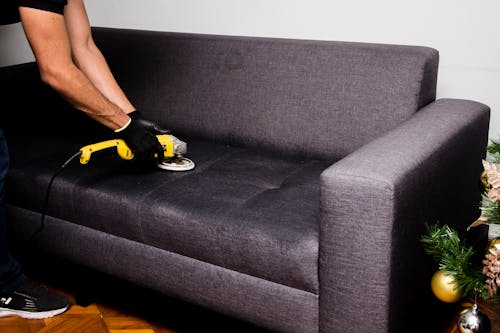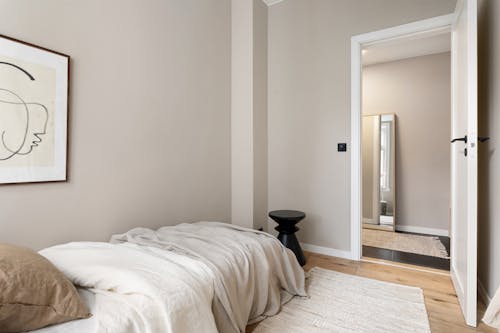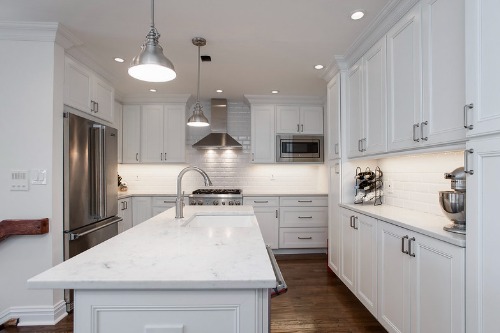1. Personality Gets Erased

When every surface is chosen for easy wiping and every object is tucked out of sight, the space can start to feel soulless. Designing only for cleanliness often strips away signs of life—books, hobbies, sentimental clutter—that make a home feel lived-in. Guests might admire the minimalism but struggle to connect with the person behind the polish. It’s a house that forgets its owner.
Decor that leans too heavily on neatness sacrifices depth for discipline. Mess isn’t always chaos—it’s character. A room without quirks is a room without stories. Homes thrive when they’re allowed to express their messiness.
2. Guests Feel Like They Can’t Relax

In homes designed to repel spills, scuffs, and crumbs, visitors may feel like they’re walking on eggshells. Pristine couches, glass coffee tables, and spotless rugs create a vibe that says “don’t touch.” Social comfort fades when people are scared to exhale. Instead of hospitality, the space offers performance.
Layered warmth and tolerance for imperfection give people emotional permission to let go. A slightly rumpled throw or used mug goes further than ambient lighting. Cozy isn’t just aesthetic—it’s attitude. A welcoming space forgives, not polices.
3. Creativity Takes a Backseat

Spaces hyper-focused on cleanliness often discourage spontaneous expression. Craft supplies stay boxed, cooking gets streamlined into minimal mess, and new projects feel like threats to order. Over-prioritizing tidiness squeezes out playfulness. When design punishes deviation, curiosity folds.
Homes should be flexible, not forbidding. Leave room for art-in-progress, toy piles, or the occasional baking explosion. Creative energy feeds on freedom—not constraint. Design should clear paths, not shut doors.
4. Emotional Texture Vanishes

A spotless aesthetic with hard surfaces and monochrome palettes can lack emotional warmth. When everything feels touch-proof, the senses miss out on comfort, coziness, and tactile variety. Emotional regulation benefits from softness, scent, and layered detail—things often removed in the quest for control. Clean may look good—but it doesn’t always feel good.
Textiles, plants, and patina breathe life into a space. Perfection doesn’t soothe—it isolates. Messy doesn’t mean messy-minded—it means emotionally available. Texture invites trust; sterility blocks it.
5. Kids and Pets Feel Out of Place

Design that avoids mess often unintentionally excludes daily chaos—kids’ crafts, pet toys, impromptu games. A home that looks too flawless can feel like it was built for adults only, deterring the vibrancy families bring. You might get compliments—but at the cost of real connection. Cleanliness becomes exclusion.
Durable surfaces and forgiving layouts can be stylish and practical. Homes should invite paw prints and pillow forts, not fear them. Childhood isn’t neat—and neither is companionship. Mess makes memory.
6. Constant Stress to Maintain

Trying to uphold a zero-mess aesthetic turns daily living into a performance. Every item out of place becomes a disruption to design. Maintenance shifts from healthy routine to chronic vigilance. The home stops serving you—and you start serving the home.
Letting go of perfection allows more sustainable rhythms. Maintenance shouldn’t be a full-time job. A little clutter isn’t a crisis—it’s proof of motion. Live first, tidy second.
7. Design Choices Are Dictated by Cleanup

Materials, furniture, and layout get chosen not for joy or comfort—but for resistance to dirt. That narrows the range of options, often rejecting warmth, color, and personality in favor of wipeable surfaces. Beauty becomes conditional. Your home stops reflecting you and starts mirroring your fear.
Design should prioritize livability, not just longevity. Easy-clean fabrics are useful—but not at the expense of soul. Style should welcome life, not repel it. The goal isn’t a showroom—it’s a sanctuary.
8. Spontaneity Gets Stifled

When everything has a system, a bin, or a hidden drawer, there’s little room for impulse. You second-guess inviting friends, cooking a new dish, or leaving a book on the floor—all in service of order. Mess avoidance becomes experience avoidance. Life doesn’t work best on a grid.
Homes should feel adaptable to the unexpected—a late-night chat, a surprise playdate, a creative burst. Controlled environments rarely nurture growth. Spontaneity needs space to spill. And not everything worth doing comes with a wipe-down.
This post 8 Problems Caused by Having a Home Designed Entirely Around Avoiding Mess was first published on Greenhouse Black.
